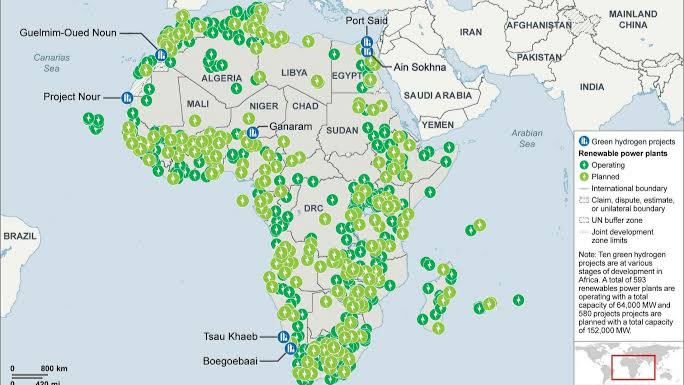Crypto Carnage: Bitcoin Plummets Towards $102,000 Amidst Market Reversal

Bitcoin experienced a sharp price decline on Tuesday, dropping into the $102,000s range after reaching a 24-hour high of over $107,000. This downturn occurred as traditional markets registered significant gains. Initially, Bitcoin had rallied on news of a government reopening and the prospect of a "tariff dividend" check, but this momentum quickly reversed as broader risk sentiment became mixed. At the time of writing, Bitcoin's price hovered around $102,636, nearing a critical psychological support level of $99,000.
The price movement coincided with President Donald Trump's announcement of a proposed $2,000 "tariff dividend" check for Americans. Unveiled on Truth Social on Sunday, this populist rebate plan aims to return "trillions of dollars" collected from global trade duties, also contributing to paying down the nation's $37 trillion debt. However, market participants interpreted this proposal differently, viewing it as a de facto stimulus program. Investors were concerned that such a program could reintroduce pandemic-style liquidity into an economy already showing signs of overheating, potentially fueling inflation and leading to a risk-off sentiment for assets like Bitcoin.
Concurrently, Washington made progress towards resolving a federal shutdown. Senate Democrats joined Republicans in a 60–40 vote on Monday evening to approve a stopgap funding bill, thereby ending a 41-day federal shutdown. This deal, expected to be signed by President Trump, is set to restore pay to federal workers and reopen essential services. Despite its immediate benefits, the agreement has sparked debate within the Democratic caucus, particularly concerning the loss of health subsidy extensions, adding a layer of political complexity.
From a technical perspective, Bitcoin's price structure remains precariously balanced between key support and resistance levels. The $99,000 level is a crucial floor, reinforced by the 55-week exponential moving average. On the upside, Fibonacci resistance is identified near $109,400, with stronger selling pressure anticipated around $111,000. A decisive breakout above $116,000 is required to potentially re-ignite a rally, pushing the price towards $129,000, which represents the upper boundary of Bitcoin's broadening wedge pattern.
Institutional buying, nonetheless, demonstrates resilience. Strategy, recognized as the largest corporate Bitcoin holder, recently disclosed a $49.9 million purchase of 487 BTC last week. This acquisition brings their total holdings to more than 641,000 coins, valued at approximately $47.5 billion. Macro optimism, largely tied to the government reopening, has provided support to equities, with a modest spillover effect into crypto markets. However, analysts caution that renewed fiscal wrangling or a slowdown in ETF inflows could trigger renewed volatility, potentially driving Bitcoin's price back towards $96,000 or even $93,000.
Despite these near-term uncertainties, long-term indicators for Bitcoin remain constructive. Factors such as rising production costs and an expanding base of long-term holders are contributing to a tightening supply. This supply-demand dynamic has historically preceded significant cyclical upturns. With only about 5% of the total Bitcoin supply remaining to be mined before the 2028 halving event, scarcity is once again emerging as a primary narrative driving future value.
Looking back over the past decade, Bitcoin's remarkable ascent from a few hundred dollars to over $100,000 has profoundly reshaped global finance, orchestrating one of the most dramatic wealth transfers in modern history. The pertinent question now is whether this exponential growth can be sustained, potentially propelling its value into the seven-figure range.
While traditional models like Stock-to-Flow have seen their credibility wane, their core principle — that scarcity drives value — still holds. A more pragmatic approach involves tracking Bitcoin’s production cost, which is the average energy expense incurred to mine one BTC. Historically, this cost has served as a reliable structural floor for its price. Projections suggest that by 2028, following the next halving, Bitcoin’s price could reach $175,000 per BTC. If Bitcoin consistently trades above its cost basis, its fair valuation might approach $200,000. Furthermore, data from Matt Crosby and Bitcoin Magazine Pro indicates that by 2032, mining costs could escalate to $675,000, implying a potential peak near $1 million if price-to-cost ratios continue to follow historical patterns.
Although Bitcoin’s compounded annual growth rate has moderated, it continues to be robust. Regression-based models, while backward-looking and requiring cautious interpretation, suggest a price range between $2 million and $10 million by 2040. Ultimately, Bitcoin’s future price trajectory will be heavily influenced by macro liquidity, real yields, and the rate of adoption. As the rate of new Bitcoin issuance declines and demand persists, production costs and capital rotation from traditional assets are anticipated to anchor the next phase of its growth. If historical trends continue, the mid-2030s could well usher in Bitcoin's era of seven-figure valuations, though models serve as guides for expectations, not absolute destiny.
Recommended Articles
Bitcoin Plummets: Price Crashes Below $98,000, Market Cap Below $2 Trillion

Bitcoin's price recently plunged below $100,000, reaching its lowest point since early May amidst significant liquidatio...
ALERT: US Spot XRP ETF Receives Listing Notice, Nasdaq Certification Fuels Launch Hopes!

The US spot XRP ETF receives Nasdaq approval, marking a major milestone for digital assets. Bitcoin faces bearish signal...
Crypto Market Shocker: Bitcoin Price Dives to $100,000 Amidst US Shutdown Fears

Bitcoin's price experienced a significant drop amidst market uncertainty, fueled by the impending U.S. House vote to end...
Bitcoin Blasts Past $105,000 as Government Shutdown Averted

Bitcoin's price saw a significant surge, nearing $105,200, driven by widespread optimism regarding the impending end of ...
Crypto King Rises: Bitcoin Price Surges Beyond $106,000 After Weekend Rally

Bitcoin has recently surged above $106,000, overcoming volatility with strong support defense and significant institutio...
You may also like...
Does Popularity Really Equal Influence in Entertainment?

In entertainment, viral fame and trending moments can be misleading. This article explains why shows doesn’t always tran...
The Science of Smell: How Scent Triggers Memory and Emotion

Smell remembers what the mind forgets. The scent of rain, the smoke of suya, the perfume that lingers after a hug, they ...
Harvesting the Sky: How Africa Is Learning to Drink the Air

Across Africa’s deserts and drylands, new technologies are pulling water from the air. But can air-to-water and fog-harv...
Ethiopia Set to Host the United Nations Climate Summit (COP32), Edging Out Nigeria.

Ethiopia has been selected to host the UN Climate Summit (COP32) in 2027, once again putting Ethiopia and by extension A...
The Hydrogen Gold Rush: Can Africa Fuel the World’s Clean Energy Future?

Africa is on the verge of a historic transformation. It has the chance to export a manufactured, high-value product, pur...
Involve Me: The New Slang of Nigeria’s Vibe Era

Involve Me” is the soundtrack of Nigeria’s new vibe era, a bold, playful cry that says, “Don’t leave me behind.” It’s th...
Borrowed Accents, Borrowed Selves: The Performance of Identity in Diaspora Spaces

For Africans living abroad, every interaction becomes a performance. Accents, gestures and behaviours are adjusted to na...
Beyond Support: Why Africans Abroad Are Being Urged to Invest, Not Just Remit

A deep dive into why African countries are urging their diaspora to move beyond monthly remittances and embrace long-ter...